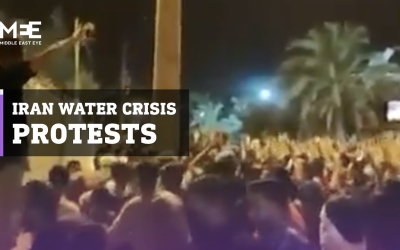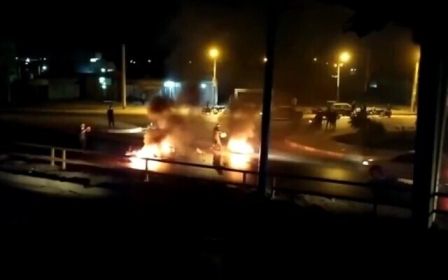Iran mobile internet outages seen as state led amid water shortage protests

Mobile phone internet services in Iran are being disrupted a week into protests over water shortages in the southwest of the country, a London-based internet monitoring group said on Thursday.
At least three people have been killed during the demonstrations as the country faces its worst drought in 50 years.
Internet-access advocacy group NetBlocks.org blamed some of the outages on “state information controls or targeted internet shutdowns”.
It said the disruption began on 15 July, when the protests first began in wealthy Khuzestan, Iran's main oil-producing region.
Although landline services continued, NetBlocks said its analysis was “consistent with a regional internet shutdown intended to control protests”.
The effects represented “a near-total internet shutdown that is likely to limit the public’s ability to express political discontent or communicate with each other and the outside world,” NetBlocks said.
Internet shutdowns have a long history in many countries in the Middle East and North Africa.
In November 2019, Iran shut down internet access nationally amid widespread public protests.
In that instance, users gradually regained access as connectivity was selectively brought back after a week of near-total outages.
'I am thirsty'
In recent days, Farsi-language media based abroad have broadcast videos they said showed protests in Ahvaz, Hamidiyeh, Izeh, Mahshahr, Shadegan and Susangerd.
They said security forces had forcibly dispersed protesters, but domestic media played down the reports.
"The people of Khuzestan are staging nightly protests, protests that have been festering for years," the reformist newspaper Arman-e Melli said on Tuesday.
Videos have shown hundreds of marching people, chanting slogans against authorities, while surrounded by anti-riot police. In some, what sounded like gunfire could be heard.
Reuters said the videos shared on social media could not be independently verified.
The reformist Etemad newspaper said the hashtag "I am thirsty" in Arabic was trending on social media to draw attention to Khuzestan's plight.
Khuzestan is home to a large Sunni Arab minority, which has frequently complained of marginalisation in mainly Shia Iran.
In 2019, the province was a hotspot of anti-government protests that also shook other areas of Iran.
Water trucks
Over the years, blistering summer heatwaves and seasonal sandstorms blowing in from Saudi Arabia and neighbouring Iraq have dried up Khuzestan's once fertile plains.
Scientists say climate change amplifies the droughts.
Earlier this month, Iranian President Hassan Rouhani said the country was going through an "unprecedented" drought, with average rainfall down 52 percent compared to the previous year.
This month, rolling blackouts began in the capital Tehran and several other large cities, which officials blamed on the impact of the drought on hydroelectric power generation, as well as surging demand.
On Wednesday, state TV showed a long line of water trucks arriving in Khuzestan that it said were from the Islamic Revolutionary Guard Corps, a day after army trucks did the same.
Middle East Eye delivers independent and unrivalled coverage and analysis of the Middle East, North Africa and beyond. To learn more about republishing this content and the associated fees, please fill out this form. More about MEE can be found here.




